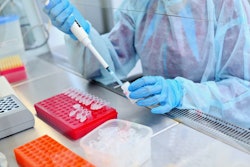
Protein produced using methane emissions could cost less than conventional fishmeal, study finds
Single-cell protein may be a win-win for the environment and for feed producers’ bottom line, according to a new study that suggests protein derived from methane may cost less than conventional fishmeal in some cases.
Using a gas such as methane to grow bacteria for protein isn’t exactly a new idea — the concept dates back decades, according to Sahar El Abbadi, a post-doctoral scholar in energy resources engineering at Stanford University. But it fell out of fashion, she said, when natural gas prices rose.
El Abbadi and her colleagues took a different approach for their paper on the economics of single-cell protein production. Facilities such as landfills and oil and gas wells emit substantial amounts of methane. These emissions are burned or released into the atmosphere, where they contribute to global climate change.
But what if methane emissions were captured and fed to bacteria instead? According to the model built by Stanford, methane-based protein could replace 14% of the world’s current fishmeal supply at or below $1,600 per metric ton — roughly the current average cost of fishmeal.
The economic success of this potential protein source would hinge on economies of scale, El Abbadi said. Currently, capturing methane from smaller sources of emissions would increase the cost of the protein such that it could no longer compete against conventional feed ingredients.
“For smaller facilities, we found it’s currently not cost effective, but we’re releasing or flaring so much methane from large sources that we could make a dent in the global fish market,” El Abbadi said.
However, by starting with protein product from the largest methane sources and working down toward the smaller options, El Abbadi believes the industry may be able to cut costs associated with methane capture through increased experience and improved technology. Potential government action such as a carbon tax or new incentives for emissions reductions could also help bring down the cost of methane-derived protein, El Abbadi said.
Depending on the species of fish, El Abbadi said, methane-consuming bacteria can replace up to 30% of the fishmeal in aquafeed. But with emerging research pointing to potential benefits for many aquatic species, El Abbadi believes growing interest in single-cell protein among feed producers will spur a new wave of research on producing and optimizing single-cell protein products.
“I hope we see it make a meaningful impact, both in terms of how we grow the microorganisms, reducing dependence on fossil fuels, and also on replacing fishmeal,” she said.

















